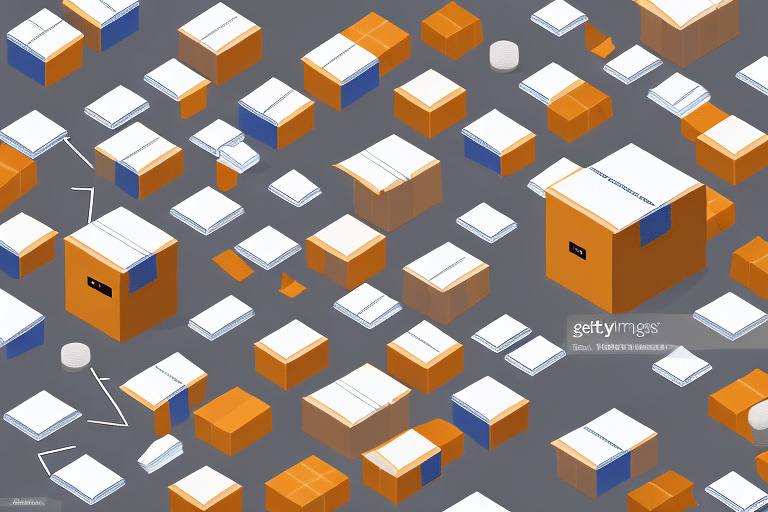Understanding the Costs of Dropshipping
Dropshipping has become a popular business model for entrepreneurs looking to start an online store without holding inventory. As of 2023, the global dropshipping market is valued at over $XX billion and continues to grow due to its low startup costs and minimal overheads. However, understanding the true costs involved is crucial for maintaining profitability. In this article, we will explore the various costs associated with dropshipping, their impact on your business, and strategies to minimize expenses while ensuring sustainable profits.
The Pros and Cons of Dropshipping
Advantages of Dropshipping
- Low Initial Investment: Unlike traditional retail models, dropshipping eliminates the need to purchase inventory upfront, significantly reducing the initial financial barrier.
- Flexible Location: Entrepreneurs can manage their business from anywhere with an internet connection, offering unparalleled flexibility.
- Wide Product Selection: Dropshippers can offer a vast array of products without worrying about inventory constraints, allowing easy testing of new products and markets.
Disadvantages of Dropshipping
- Lower Profit Margins: Increased competition often leads to price wars, squeezing profit margins.
- Lack of Control Over Supply Chain: Reliance on suppliers for product quality and delivery can result in inconsistent customer experiences.
- Inventory Issues: Stockouts or delays from suppliers can lead to canceled orders and dissatisfied customers.
While dropshipping offers significant advantages, it's essential to weigh these against the potential drawbacks to determine if this business model aligns with your goals and capabilities.
How to Calculate Your Dropshipping Costs
Fixed and Variable Costs
- Website Costs: Expenses for domain registration, hosting, and e-commerce platform fees (e.g., Shopify, WooCommerce).
- Marketing and Advertising: Costs associated with online advertising, such as Google Ads, Facebook Ads, and influencer marketing.
- Transaction Fees: Fees charged by payment processors like PayPal or Stripe.
- Shipping Fees: Costs incurred for shipping products from suppliers to customers, which can vary based on location and shipping method.
Return and Refund Costs
Returns and refunds are inevitable in any retail business. It's important to account for the costs associated with handling returns, including reverse shipping fees, restocking charges, and potential loss of product value. According to a Statista report, the average return rate for online purchases stands at approximately 20-30%, highlighting the need for robust return policies and cost management strategies.
Hidden Costs of Dropshipping You Need to Know About
Customer Service Expenses
Providing excellent customer service is vital, but it can be time-consuming and costly. Handling inquiries, complaints, and returns requires efficient systems and potentially dedicated staff, adding to your overall expenses.
Inventory Management
Maintaining accurate inventory levels is challenging when relying on multiple suppliers. Without proper inventory management tools, you risk selling out-of-stock or discontinued products, leading to canceled orders and damaged customer trust.
Shipping Delays
Shipping delays can severely impact customer satisfaction. Reliance on third-party suppliers means you have limited control over shipping times. Implementing proactive communication strategies and setting realistic delivery expectations are essential to mitigate this risk.
How to Minimize Your Dropshipping Expenses
Negotiate with Suppliers
Building strong relationships with suppliers can lead to better pricing, bulk discounts, and more favorable terms. Don't hesitate to negotiate rates, especially as your order volume increases.
Optimize Marketing Strategies
- Leverage Free Marketing Channels: Utilize social media platforms, content marketing, and SEO to drive traffic without significant expenditure.
- Email Marketing: Implementing email campaigns to engage customers can be a cost-effective way to boost sales and loyalty.
Automate Business Processes
Automation tools for inventory management, order processing, and customer service can reduce labor costs and increase efficiency. Solutions like Shopify Inventory Management and chatbots can streamline operations and minimize manual workload.
Dropshipping vs Traditional Retail: Which is Cheaper?
While dropshipping offers lower startup costs compared to traditional retail—eliminating the need for inventory and physical storefronts—it often comes with thinner profit margins due to higher per-unit costs. Traditional retail allows for bulk purchasing discounts and greater control over product quality and customer experience but requires substantial upfront investment.
Ultimately, the choice between dropshipping and traditional retail depends on your business goals, available capital, and desired level of control over the supply chain.
How to Set Competitive Prices While Considering Your Dropshipping Costs
Comprehensive Cost Analysis
When pricing products, include all associated costs: product cost, shipping, transaction fees, marketing expenses, and potential returns. Tools like Shopify's pricing calculator can help you determine the minimum price to maintain profitability.
Dynamic Pricing Strategies
Implement dynamic pricing strategies to adjust prices based on market demand, competition, and seasonal trends. Offering discounts, bundles, and flash sales can attract customers while managing profit margins effectively.
The Impact of Shipping and Handling Fees on Your Profit Margins
Shipping and handling fees directly influence your cost structure and profit margins. To manage these costs:
- Negotiate Shipping Rates: Work with shipping carriers to secure discounted rates based on your shipping volume.
- Offer Free Shipping Thresholds: Encourage customers to spend more by offering free shipping on orders above a certain value, offsetting shipping costs within higher order values.
- Use Efficient Packaging: Opt for lightweight and cost-effective packaging materials to reduce shipping expenses.
Common Mistakes that can Lead to High Dropshipping Costs
Mistakes such as selecting unreliable suppliers, failing to account for all expenses, and inadequate market research can escalate costs and harm your business. Ensure thorough vetting of suppliers, comprehensive budgeting, and continuous market analysis to avoid these pitfalls.
How to Negotiate Better Rates with Your Suppliers
Effective negotiation with suppliers can significantly reduce your costs. Strategies include:
- Build Long-term Relationships: Demonstrate reliability and consistent order volumes to gain leverage in negotiations.
- Highlight Mutual Benefits: Emphasize how a partnership can lead to increased sales and mutual growth.
- Compare Multiple Suppliers: Use competitive offers to negotiate better terms and pricing.
The Importance of Tracking Your Expenses in Dropshipping
Regularly tracking expenses is vital for maintaining profitability. Utilize accounting software like QuickBooks or Wave to monitor all business transactions, identify cost-saving opportunities, and make informed financial decisions.
Cost-effective Marketing Strategies for Dropshippers
Social Media Marketing
Engage with your target audience on platforms like Instagram, Facebook, and TikTok. Creating valuable content, running organic campaigns, and leveraging user-generated content can enhance brand visibility without significant costs.
Email Marketing
Build an email list to send targeted promotions, newsletters, and personalized offers. Tools like Mailchimp offer affordable solutions for managing email campaigns effectively.
The Role of Automation in Reducing Dropshipping Costs
Automation can streamline operations and reduce labor costs. Implementing tools for:
- Inventory Management: Automatically track stock levels to prevent overselling and stockouts.
- Order Fulfillment: Automate order processing to ensure timely delivery and reduce manual errors.
- Customer Support: Use chatbots to handle common inquiries, freeing up time for more complex customer service tasks.
How to Choose a Profitable Niche with Low Overhead Costs
Selecting the right niche is crucial for minimizing overhead and maximizing profits. Consider factors such as:
- Market Demand: Use tools like Google Trends to assess the popularity of potential products.
- Competition: Evaluate the level of competition using platforms like SEMrush.
- Profit Margins: Choose products that offer healthy profit margins after accounting for all costs.
Ways to Increase Profit Margins Despite High Dropshipping Costs
Enhance Perceived Value
Increase the perceived value of your products through high-quality images, detailed descriptions, and offering bundles or upsells. This can justify higher prices and improve profit margins.
Cross-selling and Upselling
Encourage customers to purchase additional or higher-value items by recommending complementary products or premium versions, thereby increasing the average order value.
Build a Strong Brand
Invest in branding to create customer loyalty and encourage repeat purchases. A strong brand presence can command higher prices and foster trust, leading to sustained profitability.
In conclusion, understanding the comprehensive costs associated with dropshipping is essential for maintaining profitability. By carefully managing expenses, optimizing pricing, and implementing strategic business practices, you can minimize costs while offering competitive prices and achieving healthy profit margins in your dropshipping venture.






















